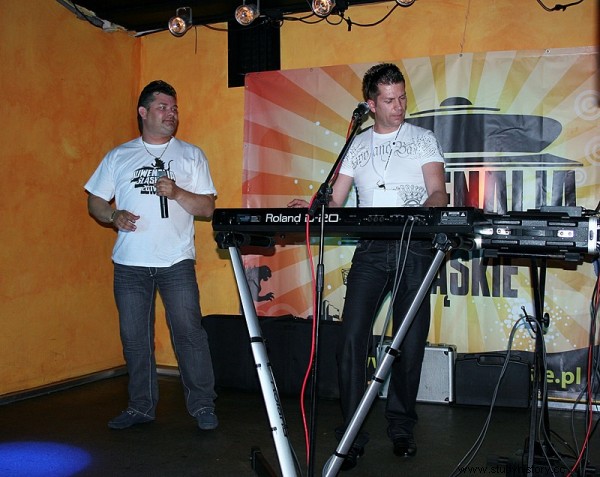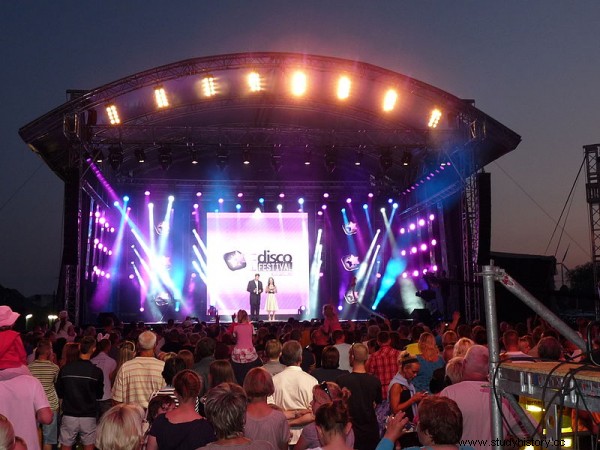Disco polo is a phenomenon of our music scene. Poland was rebuilding itself after the gray decades of communism to the rhythm of the songs "You are crazy" and "Soap Fa".
The second half of the 1960s brought many cultural changes. Also those related to the phonographic world. Rock began to evolve in new directions, becoming more music for listening than playing at dance parties. Then disco entered the dance floors. And it won the hearts of people on both sides of the Atlantic for the next two decades.
In the USA, its origins are believed to be in the musical influences of African-American, Latin and Italian communities. The dance parties on the Old Continent were dominated mainly by Italo disco and Euro disco. Both of these genres combined disco with pop, funk and electronic music. Euro disco reigned at discos almost until the end of the 90s. Modern Talking, Boney M., Vengaboys, Ace of Base or the Loft band with the unforgettable "Mallorca" - these are just a few representatives of this trend. A trend that has not only entered the pages of history, but also contributed to the emergence of perhaps the most controversial sub-genre of our native music scene. I am talking about disco polo of course.
Sidewalk music
Before it got its name, it was known as sidewalk or yard music . It arose on the wave of the development of European disco subgenres in the 1980s. However, its heyday occurred in the colorful decade of the 90s. The creation of this trend was influenced by the aforementioned italo and euro disco, as well as entertainment and banquet music. As Oliwia Bosomtwe writes: "disco polo was created out of poverty sweetened by the prospect of easy success, classism and spending time at weddings and alcoholic events in poor halls in the provinces ”. However, it quickly began to gain a wide audience.

The main centers of development of sidewalk music became Białystok, Żyrardów and Sochaczew.
Not very sophisticated sounds of the synthesizer, simple vocal (often referred to as bad by critics) and idealistic lyrics - to the horror of the Polish phonographic world - attracted an ever wider audience. Not only to fire stations or local festivals. The main centers for the development of sidewalk music have become Białystok, Żyrardów and Sochaczew . The pioneers of the genre were the bands Bayer Full and Top One, which started their activity in the 1980s. In 1990, Sławomir Skręta founded the Blue Star label, to which the biggest names in the industry - including Shazza, Akcent, Boys and Bayer Full - were released. In 1993, together with Zenon Martyniuk (the then vocalist of the Akcent group), Skręta created a new name for the trend - disco polo.
Underestimated success
The change of the political system in our country turned out to be a favorable moment for the development of this musical sub-genre. There was enthusiasm and the wind of change in the air. Everyone's eyes were turned towards the West, feeding Poles with an idealized world of easy and quick wages, great love, passion and great opportunities. Disco polo bands with their light, naive lyrics fit perfectly into this narrative. Sales were driven primarily by the cassette and record market.
This success, however, was underestimated by the rest of the Polish music scene. This could be heard, for example, in the comments of Janusz Weiss, who was assigned the task of conducting the 1st Popular and Walker Song Gala in February 1992 at the Congress Hall of the Palace of Culture and Science in Warsaw. Slightly biting sentences, uttered as part of the presenter's jokes, were a weak cover for the true attitude of the journalist to this trend. Despite this, the event, which included, among others, Akcent, Atlantis and Top One bands heralded the golden age of disco polo music. Eventually, it settled permanently in our domestic backyard.
The history of the cult "Fa-soap" made during the gala is also interesting. The song, which became one of the greatest disco polo hits, was originally sung by Marlena Drozdowska and Marek Kondrat. It was created as a pastiche of songs of this subspecies. As you can see, a trend that many could not approach with distance, he was able to treat himself with a grain of salt.
The wonderful years of disco polo
The years 1994–1997 was the period of the greatest splendor of disco polo. Although it was still ignored by the mainstream and the rest of the music world, the high sales of albums, even ahead of the likes of Hey and Maanam, could not go unnoticed.

The hits of Shazza, Boys and Big Dance were entertained not only in Poland.
In 1994, Polsat television launched the Disco Relax program. Two years later, she released Disco Polo Live. The channels of Polonia 1 and TV Polonia as well as local radio stations and Radio Eska also devoted their programs to this music. The hits of Shazza, Boys and Big Dance were entertained not only in Poland. During their tours, disco polo stars visited Poles living in other countries, including the USA. Their works also found their way into politics, supporting the campaigns of Marian Krzaklewski, Waldemar Pawlak or Aleksander Kwasniewski himself, at whose election rallies the song "Ole Olek!" Top One.
The golden years did not last long, however. After 1997, the market seemed to be saturated with disco polo performers. The Polish music scene began to develop in new directions, expanding the phonographic range to include fresh pop, rock, hip-hop, dance and electronic musicians. Programs devoted to disco polo began to lose viewership and audience. Eventually they were pulled off the antennas. Those contractors who had no idea to change their branches emigrated abroad, many to the USA.
Renaissance disco polo
Although the turn of the 20th and 21st centuries seemed to herald the death of disco polo, time has shown that our fondness for simple melodies and naive lyrics is still doing well. The development of the Internet and social media not only allowed some artists to stay afloat, but also gave them and the new generation a chance for this subspecies to flourish again . Songs such as "She is dancing for me" or "Through your green eyes" maintain high positions in YouTube rankings. Their performers are invited to the biggest mainstream media events, such as New Year's Eve concerts broadcast throughout the country.

Our fondness for simple melodies and naive lyrics is still doing well
Despite this popularity, the success of disco polo music continues to be diminished. In common opinion, it is treated as something worse. And only numerous occasional events in Poland prove that although most of us deny that we do not listen to this music, we all know the texts of disco polo hits by heart.
